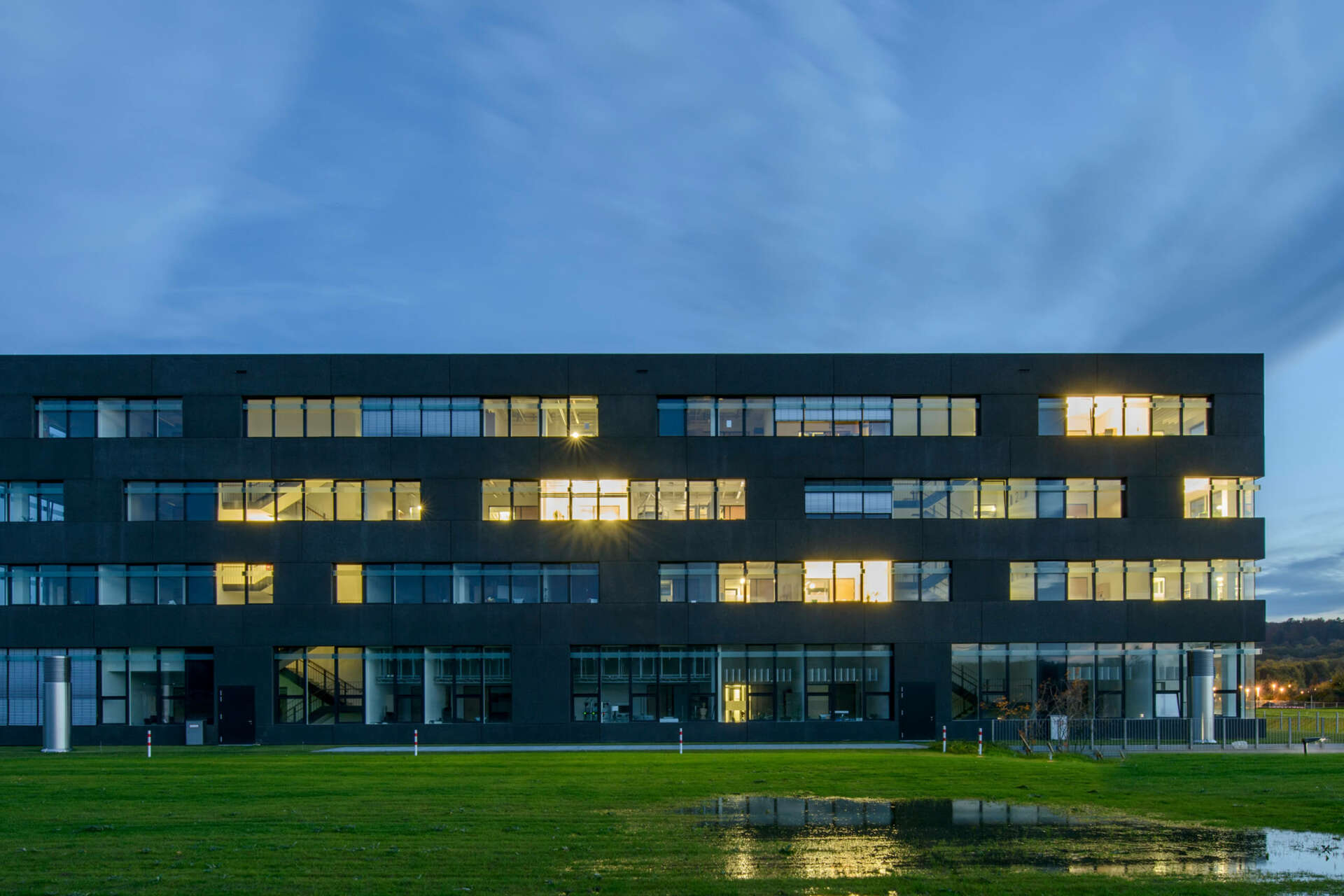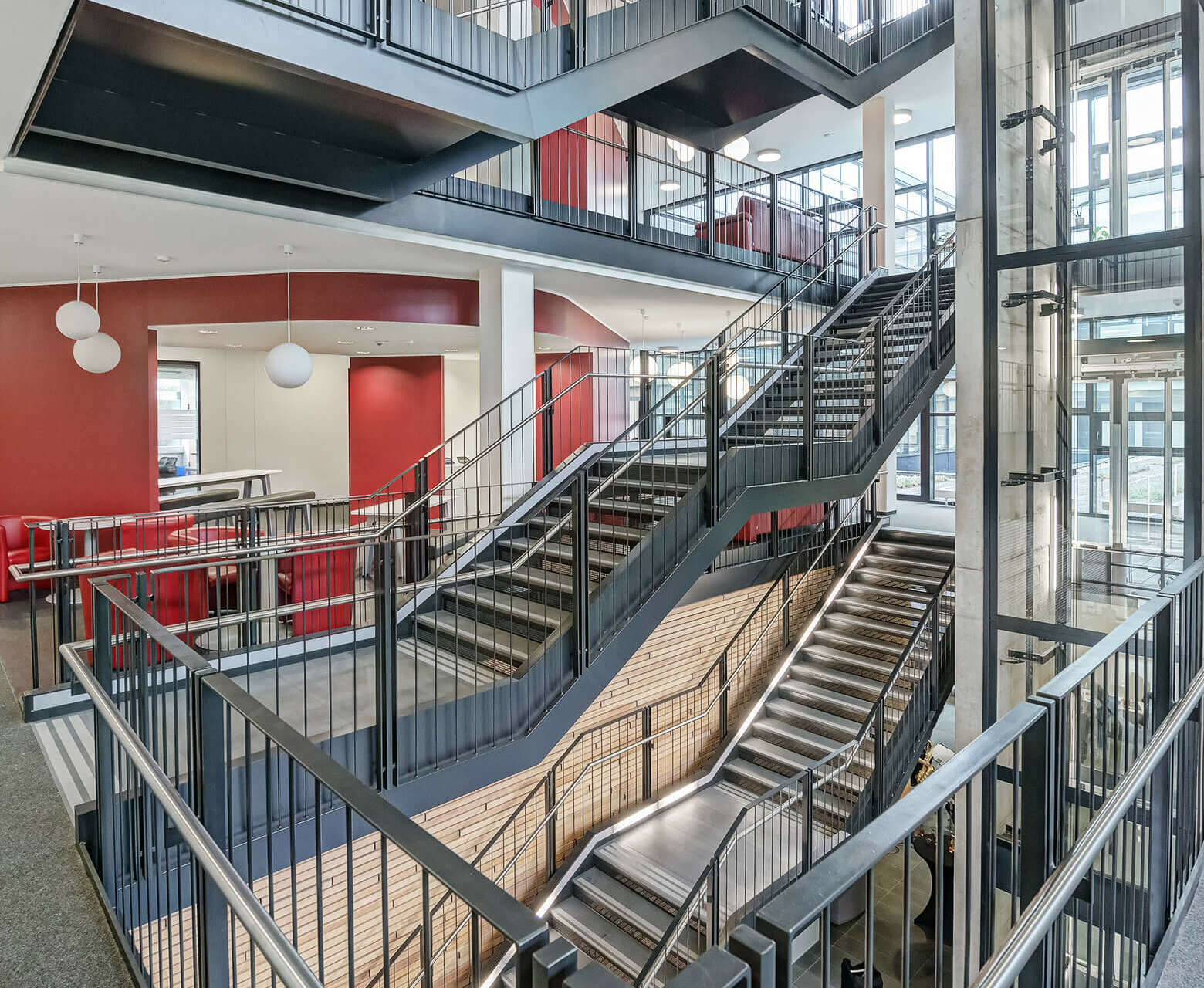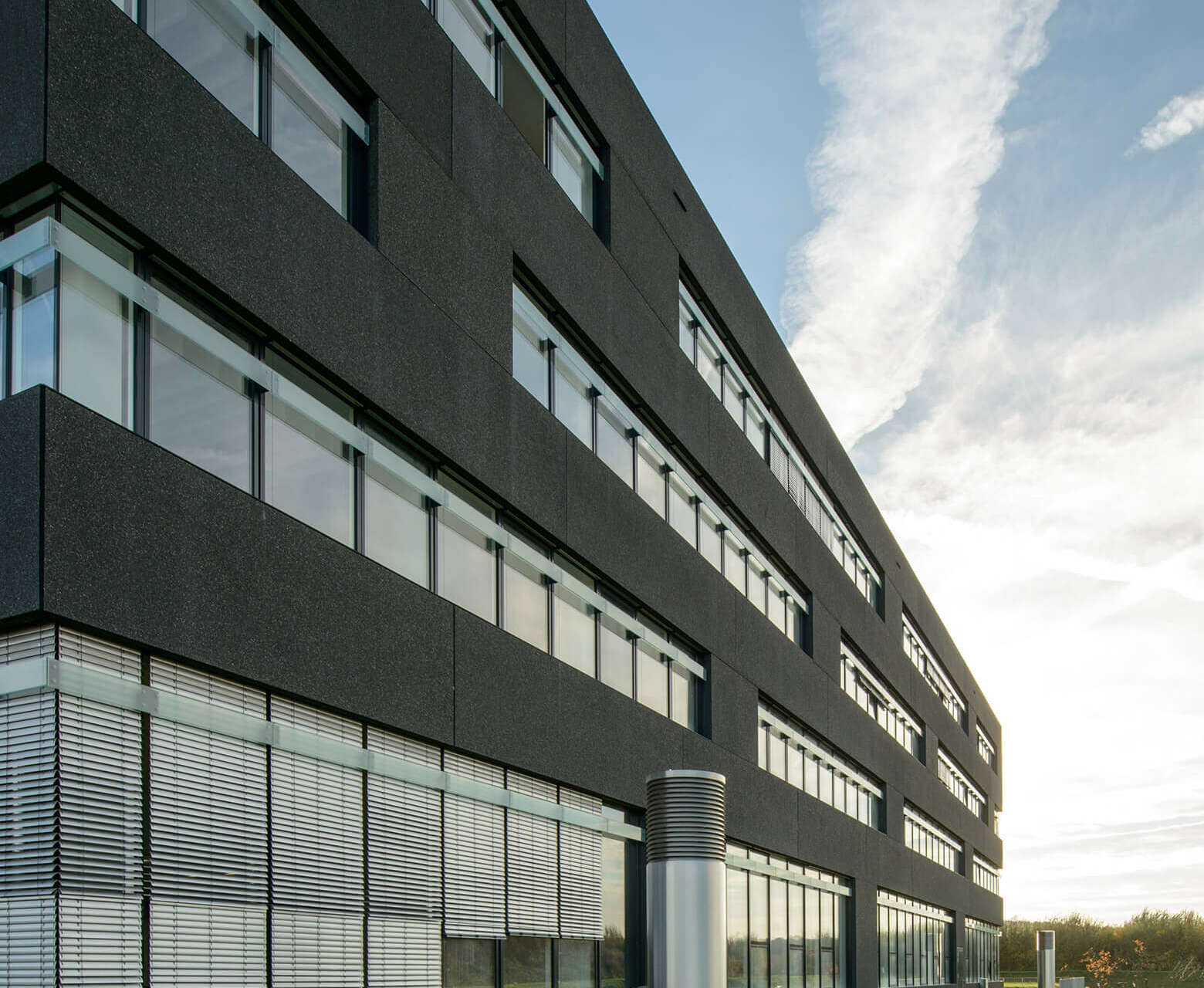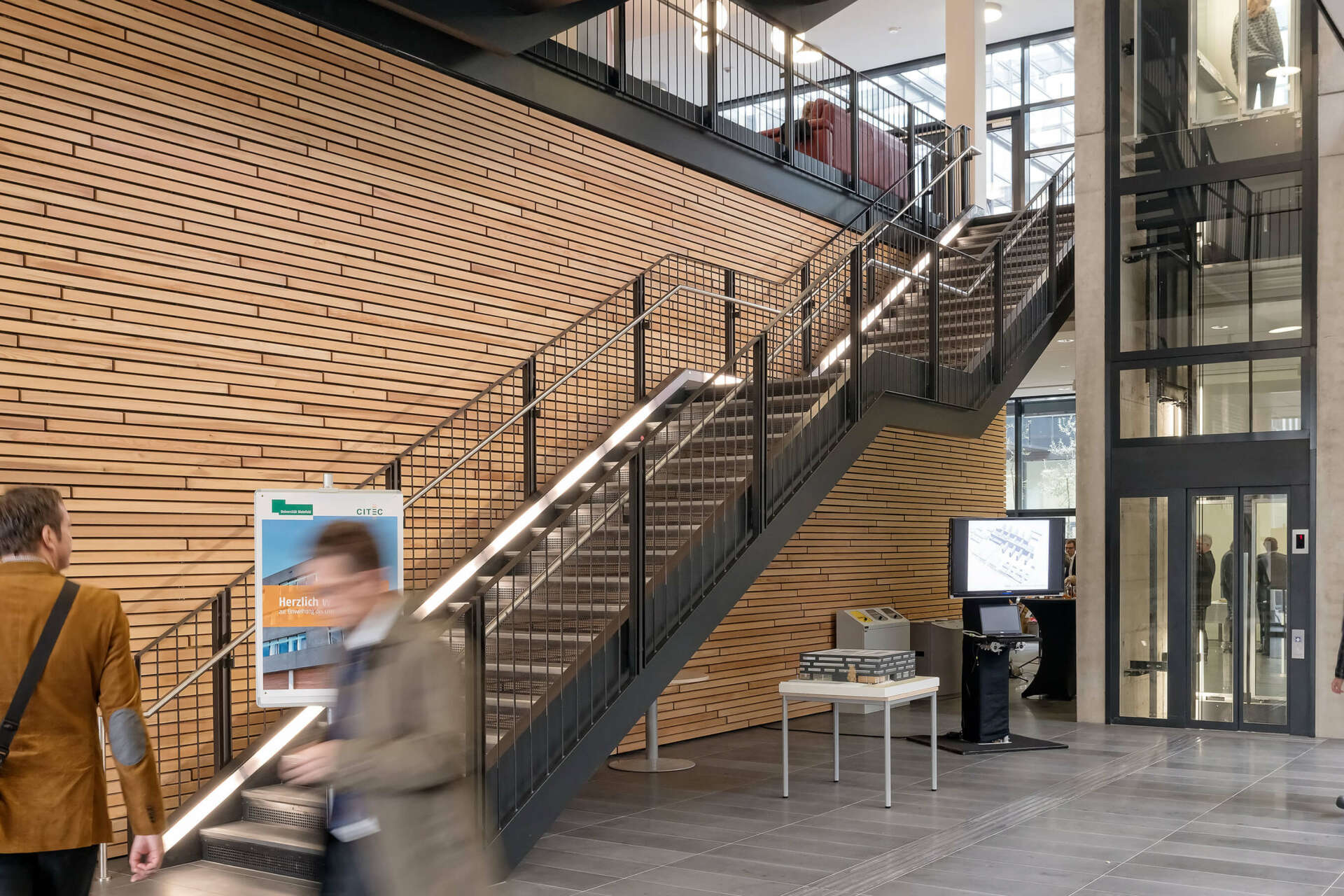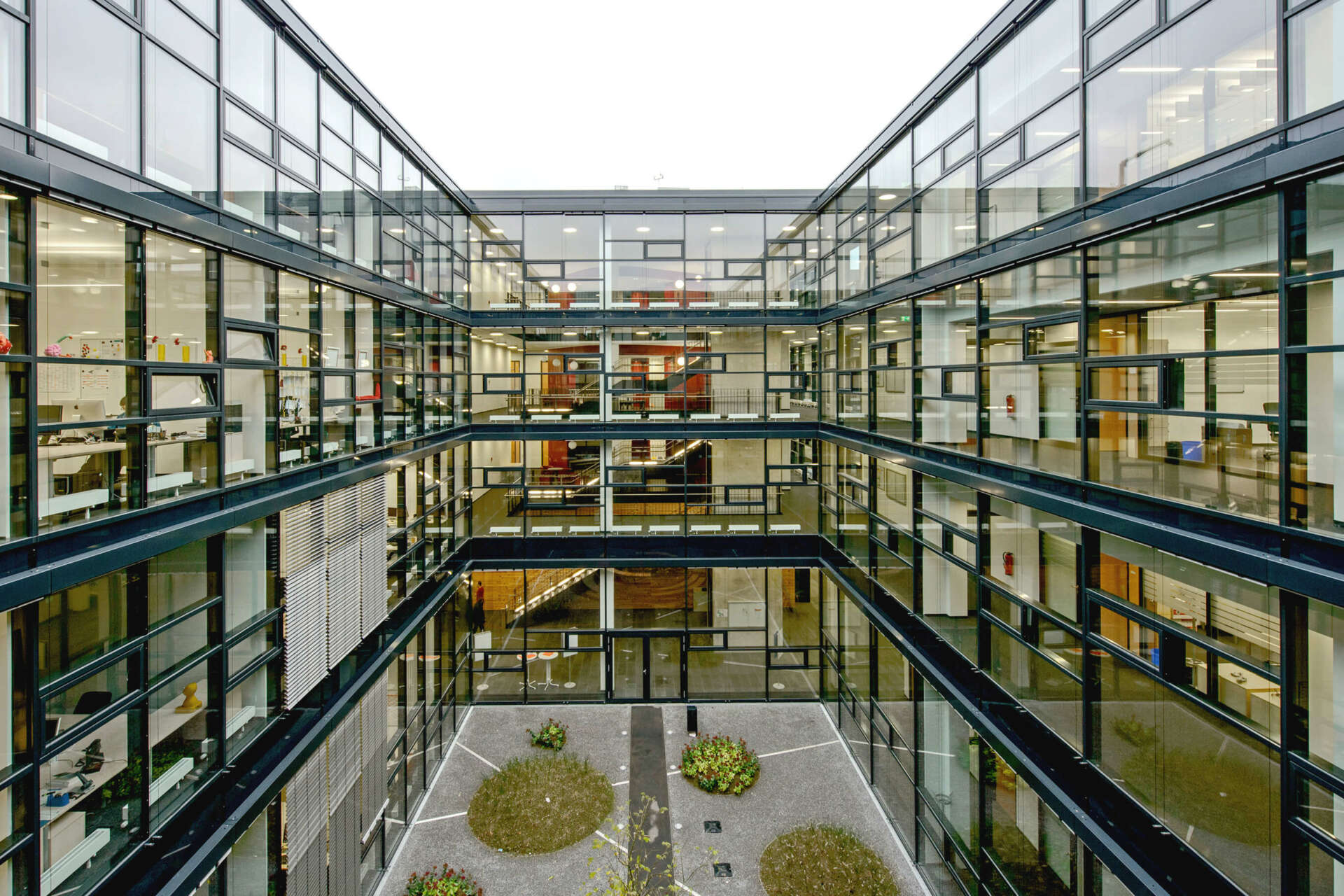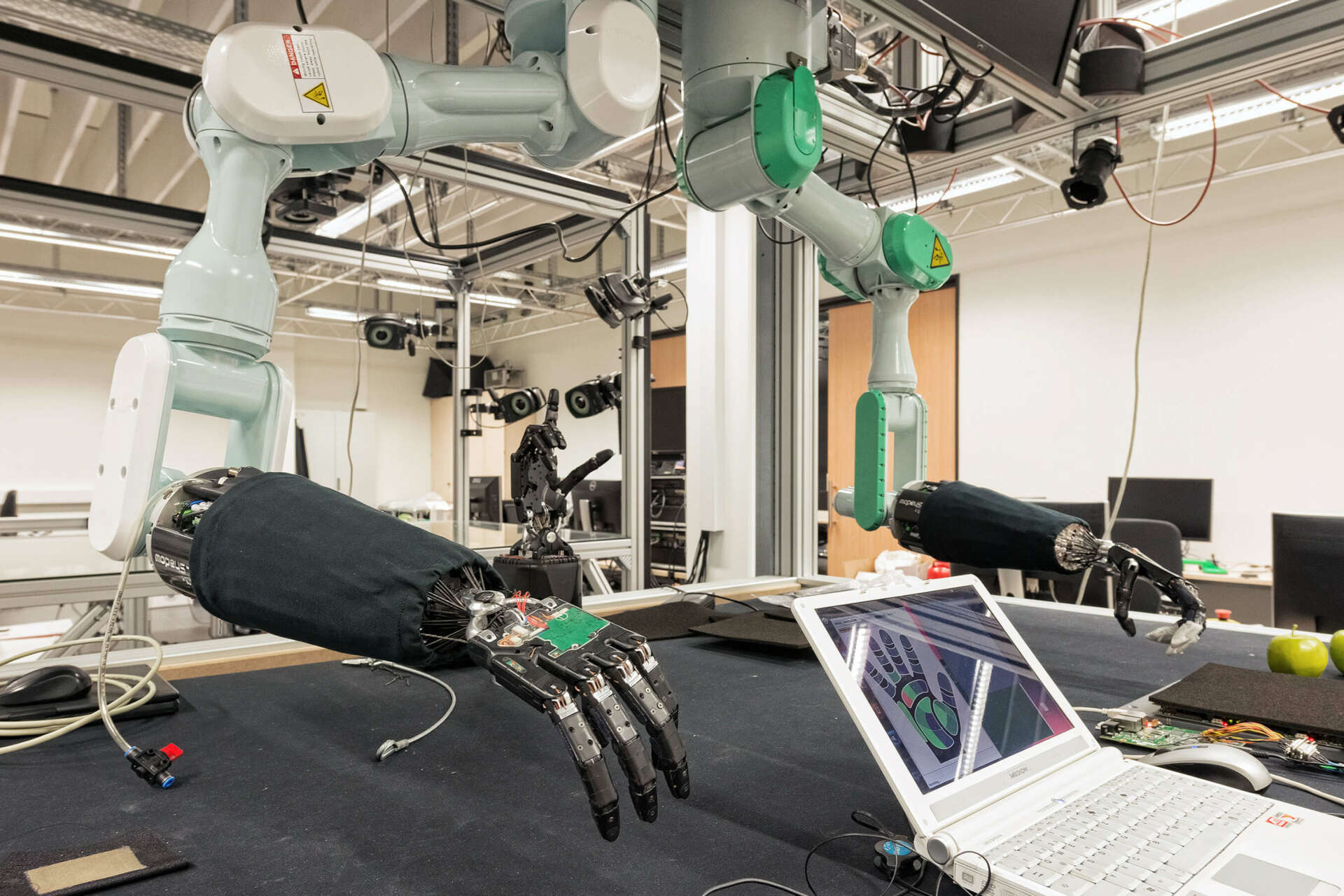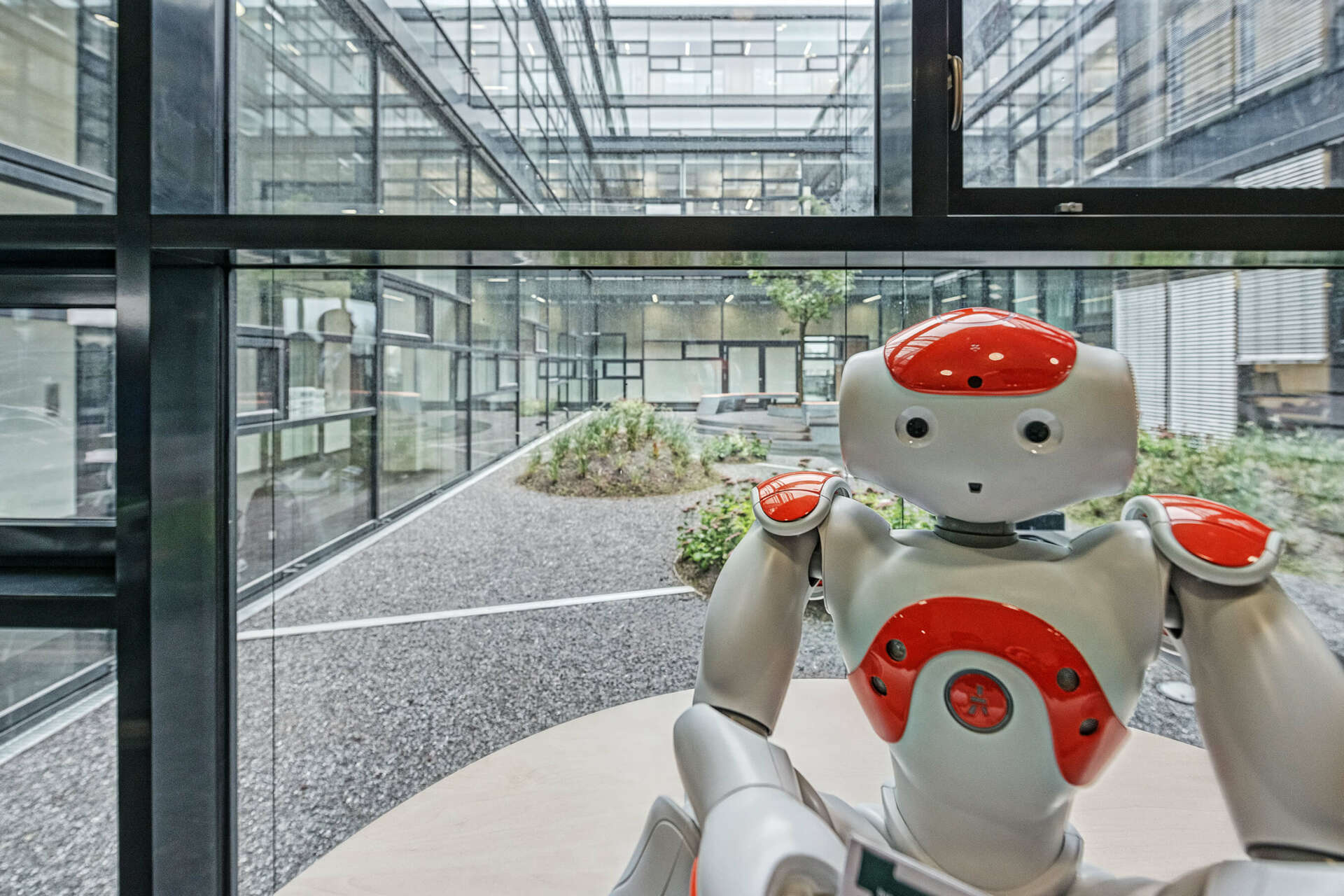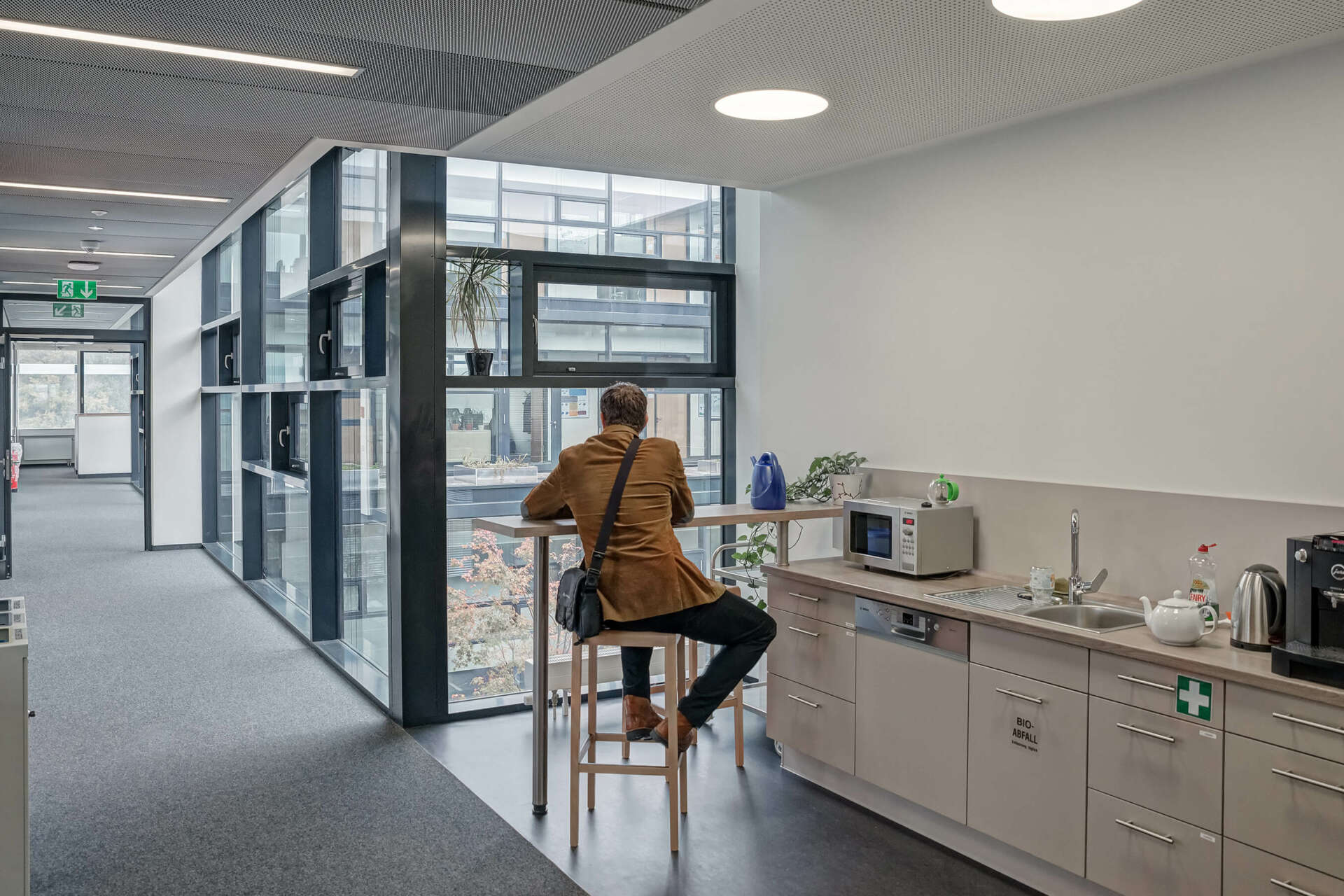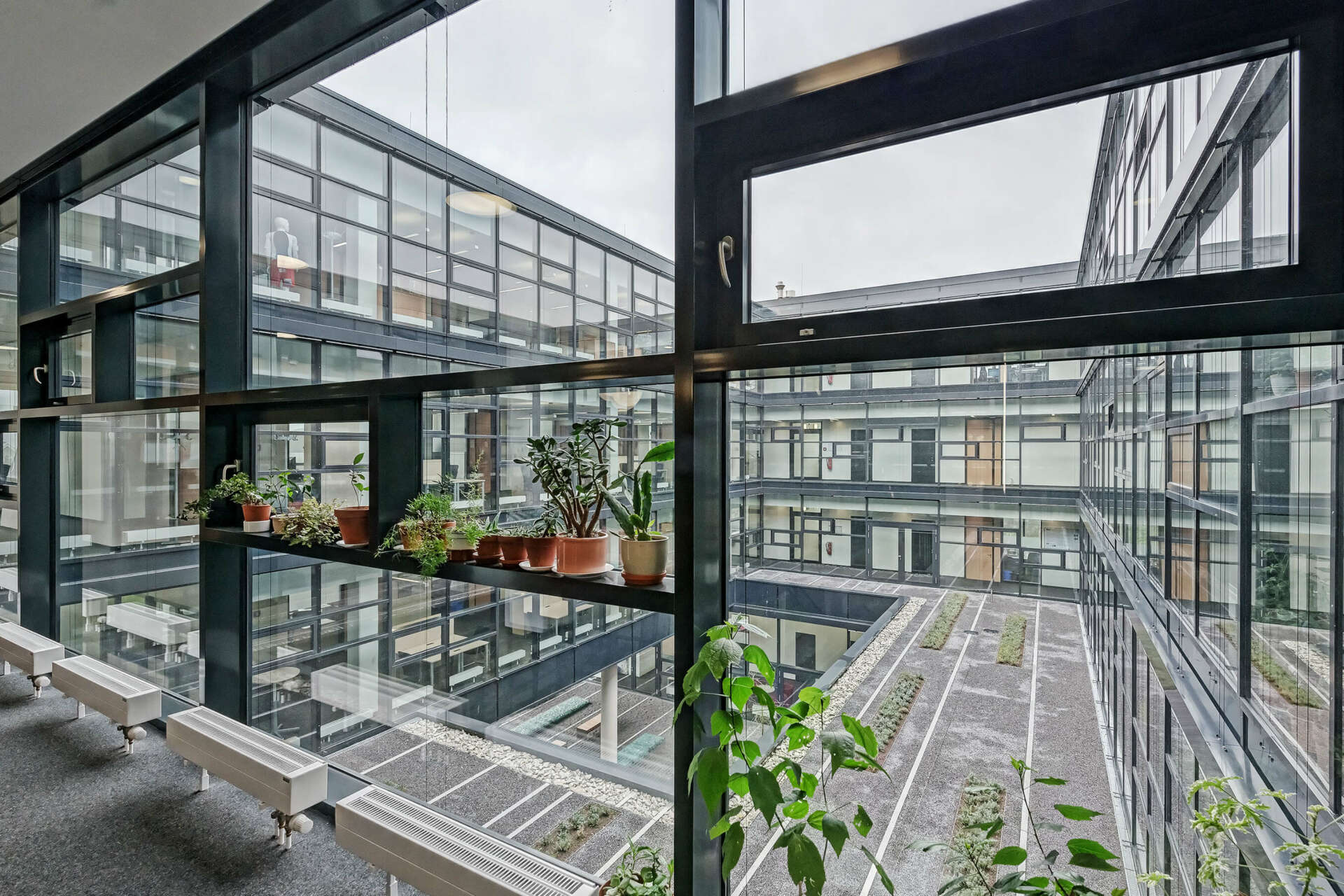Location
Bielefeld, DE
Services
Multidisciplinary Planning, Project Management, Architecture, Building Services, Building Physics, Energy Concept
Client
BLB NRW Bielefeld
Area
14.743 m² GFA | 63.152 m³ GV
Construction costs
EURO 23.4 million
Project term
December 2009 – February 2013
The new Interactive Intelligent Systems building (FBIIS) in the Cognitive Interaction Technology (CITEC) excellence cluster forms the center of the University of Bielefeld’s expansion on the Nord campus. The research building plays host to scientists from various disciplines such as IT, biology, sports science, linguistics, psychology and physics in 17 different groups, who collaborate across departments in developing technical systems. Exchange and communication between the groups of researchers are essential for the success of the world-leading institute.
The way the building is structured creates the perfect atmosphere for this to happen. Our planning team has developed a concept which makes it possible to link all workflows together. In contrast to the streamlined, monolithic exterior, the interior is a picture of liveliness, which provides researchers with plenty of space for their varied work and for an informal exchange of views. In addition to the research laboratories, the new building offers administration areas, meeting zones, conference rooms and an auditorium for 200 people.
